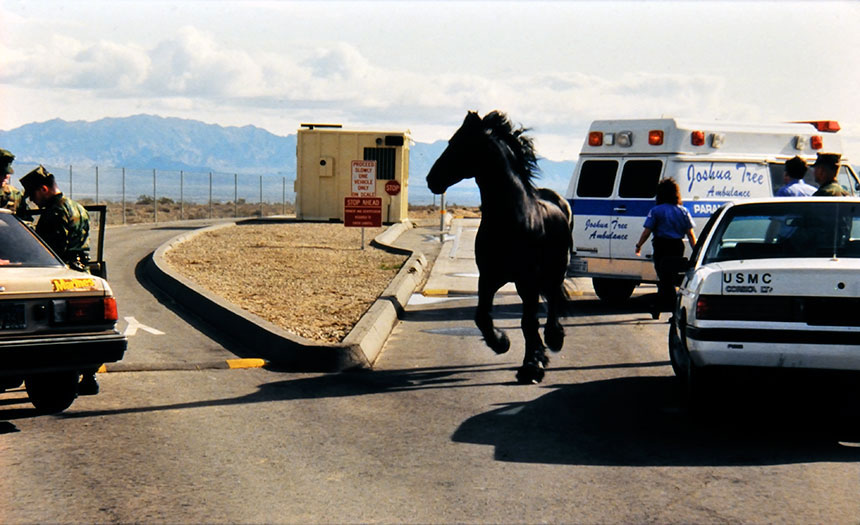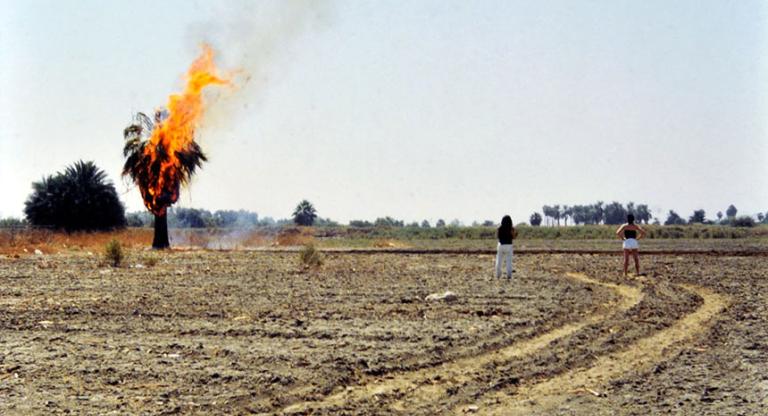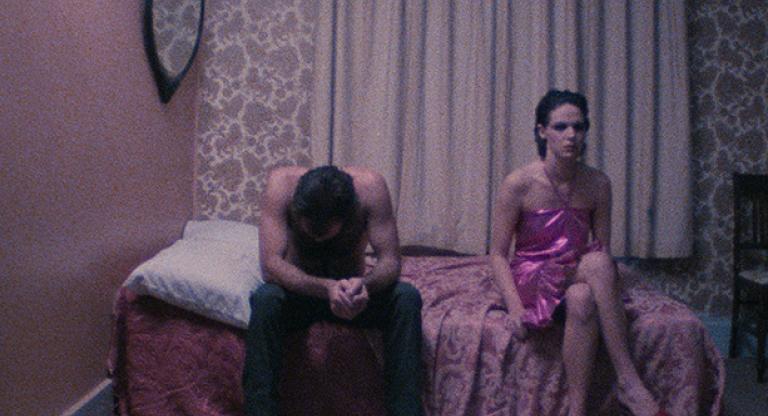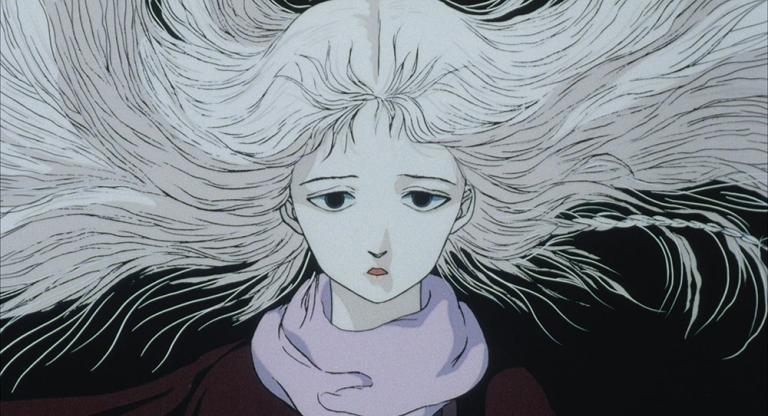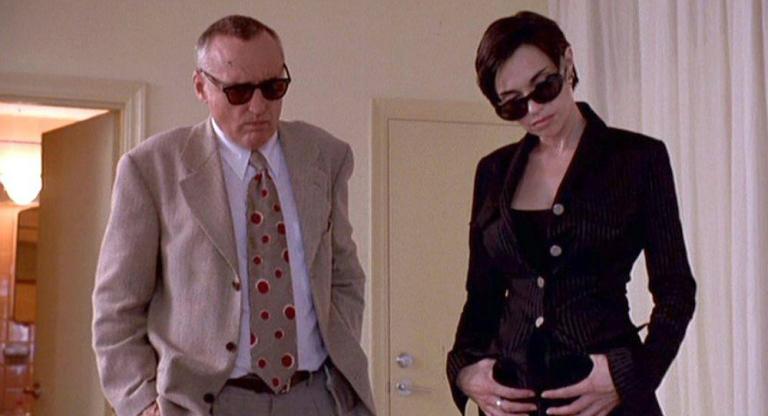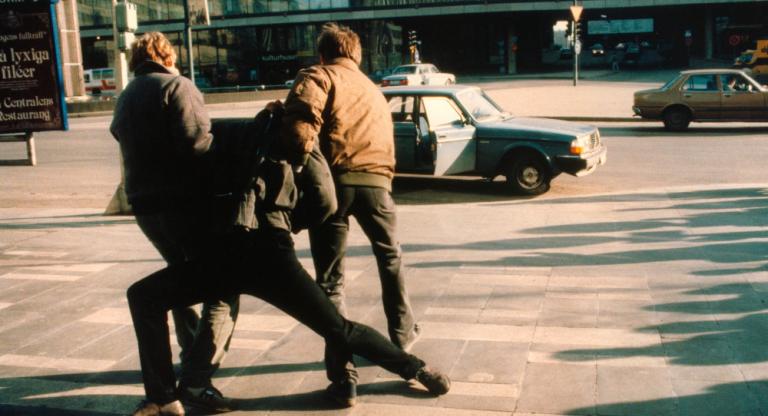A showcase on the Criterion Channel last year reintroduced audiences to the work of Nina Menkes, a true visionary who survived the 80s/90s indie boom without a studio deal or a stint in advertising. Missing from that nearly comprehensive survey was her masterpiece, The Bloody Child (1996), still in the process of restoration at the time. After two triumphant screenings at NYFF 2021 last fall, the film returns as part of BAM’s six-film tribute to a great American artist finally receiving her due after nearly four decades of indefensible obscurity.
The Bloody Child cycles through lengthy single-shot tableaux, braiding together extended, often static, moments surrounding the arrest of a marine who murdered his wife outside the 29 Palms base in California. Despite the blunt, photojournalistic beauty of Menkes’s compositions, the camera struggles in the pursuit of its objects. The opening image offers a breathtaking sunrise which casts just enough light to suggest human figures mulling around the desert. Another sequence, shot from the backseat of the murderer’s car, throws his crewcut and blood-stained headrest into blaring detail when approaching headlights pass, only to quickly resubmerge the roving crime scene back into darkess. The limitations of the camera disrupt the search for data points related to a crime, its perpetrator and his victim, and force us into Menkes’s volley between a rigorous editing scheme and its own oneiric rhythm.
The central technique involves juxtaposed segments of lengthier shots, each capturing an unvarying event or visual arrangement (the woman’s corpse in the backseat, a horse trotting around the crime scene, soldiers waiting for an ambulance). Unlike standard cross-cutting techniques, however, these shots lack dramatic escalation, and the flow between them minimizes the rhythmic velocity typically used to clench-and-release audiences. Each image simply continues until its interruption by another strand.
These pieces could only be considered fragments if Menkes were after a procedural account of a heinous act. Instead she presents a slow-motion nightmare of institutional misogyny. The central character is a nameless, nearly silent female captain (co-writer and co-editor Tinka Menkes) overseeing the investigation. Despite her superior rank, she’s marginalized as an observer as a subordinate angrily thrusts the murderer’s face into the victim’s lifeless bloody while screaming “how’s that smell buddy?” with a drill sergeant’s inflection. In the phallocratic hall-of-mirrors that is the U.S. military, a woman’s rape and murder mutates into a hazing ritual masked as moral outrage. Menkes takes us into the captain’s interior with hallucinatory sequences set in North Africa, where she silently visits a cemetery and adorns herself with flamboyant makeup. Without reducing her character’s experience to mechanistic psychology, Menkes suggests an interior rich with feeling that must be suppressed in order to lead men back home. In these moments she also expands her purview to include the American gluttony for brutality abroad. Without an ounce of sanctimony, The Bloody Child conjures a subjectivity in which domestic violence and state terror bleed into one another.
The Bloody Child screens through March 10 at BAM.
